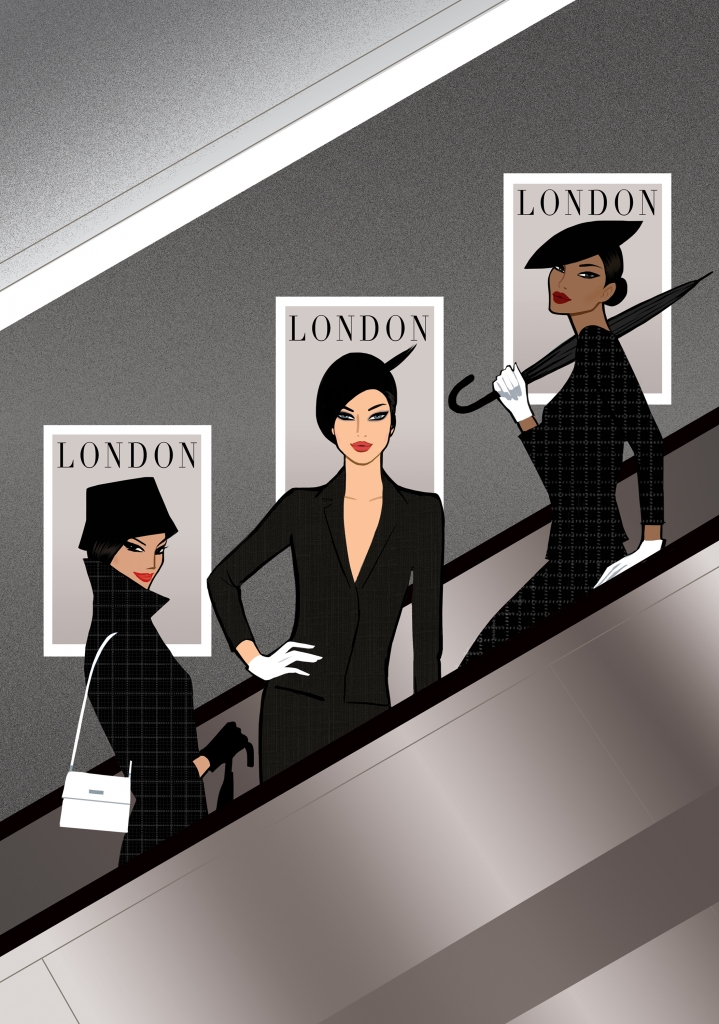10 things every illustrator should know

Folio illustration agency celebrated 40 years in the business in 2016
This article was originally posted by digitalartsonline.co.uk
The agency says the business of illustration has changed a vast amount in the last four decades, from lugging around hand-painted and airbrushed originals to globally sending out 3D CGI animation in a matter of minutes. But the key to a long career is embracing change.
Folio represents a vast range of commercial artists in the advertising, editorial and publishing sectors, also extending into animation and CGI.
It all began with founder Nicholas Dawe, working from a small basement shop in 1976, inspired by close friend and illustrator George Underwood who worked on early album covers for David Bowie and T-Rex among others.
Since then, Folio has worked on numerous advertising campaigns for brands ranging from British Airways to Motorhead’s Snaggletooth logo by Joe Petagno. Current clients include a huge array of major household names such as Coca-Cola, Adobe, Facebook, Apple, Ford, Google and the BBC.
With many years of experience behind Nicholas, his wealth of knowledge is truly valuable. Below is his list of 10 things every illustrator should know, interspersed with the work of selected Folio illustrators.

Voyages Extraordinaire by Muti
Learn to draw
This may be obvious to most of you, but we see countless aspiring illustrators that lack this fundamental skill. Being incredible at Adobe Illustrator doesn’t mean you should skip this step. Technology changes, but the foundation of illustration is drawing.
Be consistent
The world’s best illustrators are often imitated, but never duplicated. Develop your own signature style and apply it to a range of subjects. Figure out how your style translates from people to animals, maps, icons, architecture, typography, food and drink and whatever else you can think of, and you will have a very solid portfolio.

7up Christmas campaign by Bruce Emmett
Be yourself
Don’t be afraid to show personality in your work. You will likely be judged on the type of images you make, so they may as well be accurate reflections of who you are.
Focus on the right things
Once you have built a portfolio that you are proud of, concentrate on getting your first paying clients. You don’t need an expensive website, you don’t need to spend lots of money on promotional items and you don’t need thousands of Instagram followers. Updating your various social media accounts is easy, getting your first 10 paying clients is hard. Put your time and effort into what’s important first; you can go back and do the easy stuff later once you’re making money.

Portrait of David Bowie for Funky Dory by George Underwood
Keep moving
If you have success with a particular style, don’t stop developing. Trends move on and so should you. Always be open to change and be ready to evolve if you want to have a long career.
Don’t give away copyright of your work
More and more contracts include the handover of copyright. Some clients demand it; some can be reasoned with. Equally, some artists never assign copyright of their work, and some don’t care. You can make that choice. The bottom line though is that you should be paid fairly for it. Keep in mind companies that collect image libraries of illustration might eventually get to the point where they no longer need to hire an illustrator, making it all the more difficult for future freelancers.

The Parisianer cover by Owen Davey
Be honest
It’s far better to be honest about what is and isn’t achievable at the start of a job than it is to over promise and under deliver on deadline day. If you need more time, more guidance or technical help, just ask. You are not expected to know everything.
Learn when to say no
It can be very tempting to say yes to everything, especially when starting out. You can easily find yourself in situations where you are overloaded and not able to produce your best work. Experience will teach you how long you need for different kinds of jobs, but give yourself plenty of time at the beginning. A rushed job is of no benefit to you and no benefit to the client.

‘Glamour on the Tube’ by Jason Brooks London Sketchbook
Be professional
In your communication with clients, in the presentation of your work, in your time management, be professional even when your client isn’t.
Work hard
If you are passionate about your work, being a professional illustrator is an incredible career. It’s far better to work hard at something you love, than something you don’t, so put the effort in to make it a reality.
